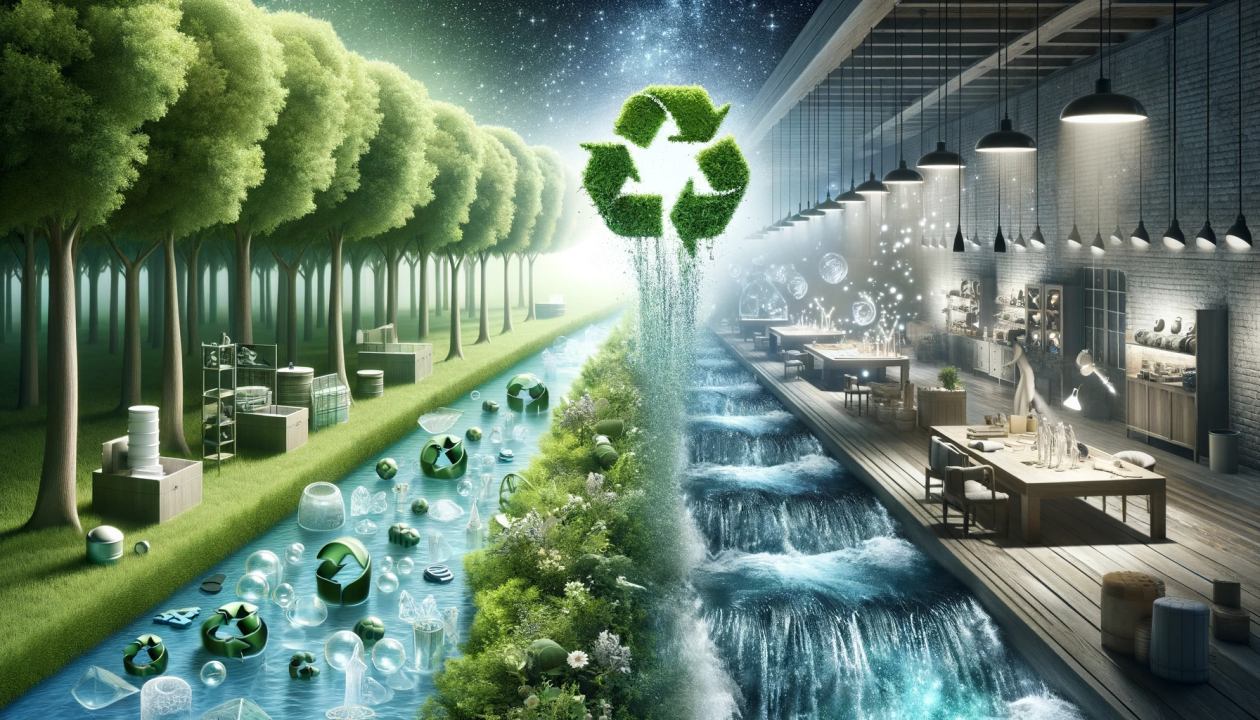Sustainability Spotlight: PEF's Potential in a Polymer World
Dive into the world of Polyethylene Furanoate (PEF), as we explore this bio-based polymer that's making waves with its superior barrier properties and environmental benefits. From promising applications to potential hurdles, get a comprehensive understanding of PEF's role in the future of sustainable material solutions.

Polyethylene Furanoate (PEF)
This revolutionary bio-based polymer could very well be a gamechanger in our ongoing quest for environmentally friendly materials. Let's delve into what PEF is, its potential as a material of the future, and explore its pros, cons, and application areas.
What is PEF Polyethylene Furanoate?
PEF is a 100% biobased polymer, derived from renewable resources like corn, wheat, or beets. It's similar in structure to PET (Polyethylene Terephthalate), which is widely used in various industries, particularly for making plastic bottles. However, PEF stands out due to its enhanced barrier and thermal properties, making it an attractive alternative to conventional plastics.
Why Might PEF be the Material of the Future?
1. Superior Performance: PEF boasts superior barrier properties compared to PET. This means better preservation of products, longer shelf life, and potentially reduced food waste – a significant factor in sustainability.
2. Lower Carbon Footprint: Since PEF is derived from biomass, its production leads to a lower carbon footprint, Bio-based PEF offers 50–74% lower life-cycle greenhouse gas emissions than PET in 250 mL bottles. This aligns well with the global push towards reducing GHGs.
3. Enhanced Biodegradability: PEF degrades more easily than traditional plastics, which is a huge plus in our battle against plastic pollution.

Application Areas
PEF's unique properties make it suitable for a wide range of applications:
- Packaging Industry: Particularly for food and beverages, where its superior barrier properties can extend shelf life.
- Textile Industry: As a more sustainable alternative for producing fabrics.
- Automotive and Electronics: For components where thermal stability and durability are key.
Potential Assessment: PEF
Pros:
- Improved Barrier Properties: Offers better protection against oxygen, carbon dioxide, and water vapor.
- Thermal Stability: Higher resistance to heat.
- Renewable Resources: Reduces dependency on fossil fuels.
- Reduced Carbon Footprint: Aligns with global sustainability goals.
- Recycling Potential: PEF bottles have been deemed recyclable alongside PET bottles, which is a significant advantage in terms of integrating into existing recycling systems and reducing environmental impact (McCoy, 2017).
Cons:
- Cost: While promising, PEF production costs are around twice as expensive as PET. $2,700/ton for PEF and ~$1,200/1,500/ton for PEF. A significant difference of $1,200. However, as technology matures and production scales up, this cost disparity is expected to decrease, making PEF more economically viable in the long run. See improvement projection below.
- Scaling Production: Scaling up production to meet global demand poses a significant challenge. Especially in ensuring we can manage the required biomass production to switch.
- End-of-Life Considerations: Despite its potential, it is important to consider the end-of-life options for PEF in terms of plastic waste accumulation. Sustainable disposal and recycling methods need to be evaluated to ensure its environmental friendliness (Gabirondo et al., 2020).
- Challenges in UV Stability: One study revealed that PEF showed significant discolouration and degradation after UV irradiation, which could be a consideration for packaging applications, especially for products sensitive to light, like baby formula (Maaskant & van Es, 2021).

When can we transition to PEF?
Maybe sooner than we think... We leveraged our AI-powered platform, Odin, to analyze the progress of PEF and PET technologies. The outlook is promising: PEF could become cost-competitive within the next 7-10 years, matching the price of PET.
Method
We measured the rate of technological improvement in PET (16%) and PEF (19%) per year using our multivariate regression algorithm. Coupling the rate with an estimate of each materials relative performance (we estimate they are equal to each other -> 1:1) and cost (PEF is approximately twice as expensive –> 1:2), we can project out how the Performance/$ will improve over time.

The horizon for PEF's emergence as a viable alternative to PET is promising, with a projected timeline of 7-10 years to performance and cost parity to PET.
As sustainability takes center stage in many industries, PEF stands poised to play an important role in reducing environmental impact.
However, it's essential to monitor the ever-evolving landscape of polymer technologies. While the future looks bright, technological advancements and market dynamics can introduce variables that may influence the transition timeline, e.g. carbon tax could facilitate faster adoption by making PET less cost competitive.
At Focus, we're dedicated to monitoring tech trends and sustainable materials. Connect with us to explore how we can help you identify and integrate sustainable materials like PEF into your operations.
More articles like this

A look into the future: BEV or FCEV—What AI has to say
AI-driven insights reveal why LFP batteries paired with graphene-coated silicon anodes are set to dominate EVs. This report outlines the breakthrough in energy density, Europe’s lag in adoption, and what automakers must do now to stay competitive in the global electric vehicle race.
Odin Platform Update – New Features & Improvements
We’re thrilled to introduce a range of new features and improvements on the Odin platform, designed to make your research and innovation process even more seamless. From chatting with up to 1,000 patents at once, to clickable patent links, complete patent references, and enhanced control over patent chats—this update is packed with powerful tools. Plus, our new Tracking Workflows feature helps you stay on top of critical changes in your patent sets effortlessly. Read the full post to explore how these updates can supercharge your work!

The Complex Challenge of Material Sourcing in Luxury Goods
The luxury goods sector, known for its stringent quality standards and opulent appeal, faces a daunting challenge in aligning with environmental sustainability, particularly in meeting Scope 2 and 3 emissions criteria. These scopes, part of the Greenhouse Gas (GHG) Protocol, extend beyond direct emissions (Scope 1) to include indirect emissions from purchased energy (Scope 2) and all other indirect emissions across a company's value chain (Scope 3).
Reach out to us!
Start a conversation. We are happy to help.
.svg)


